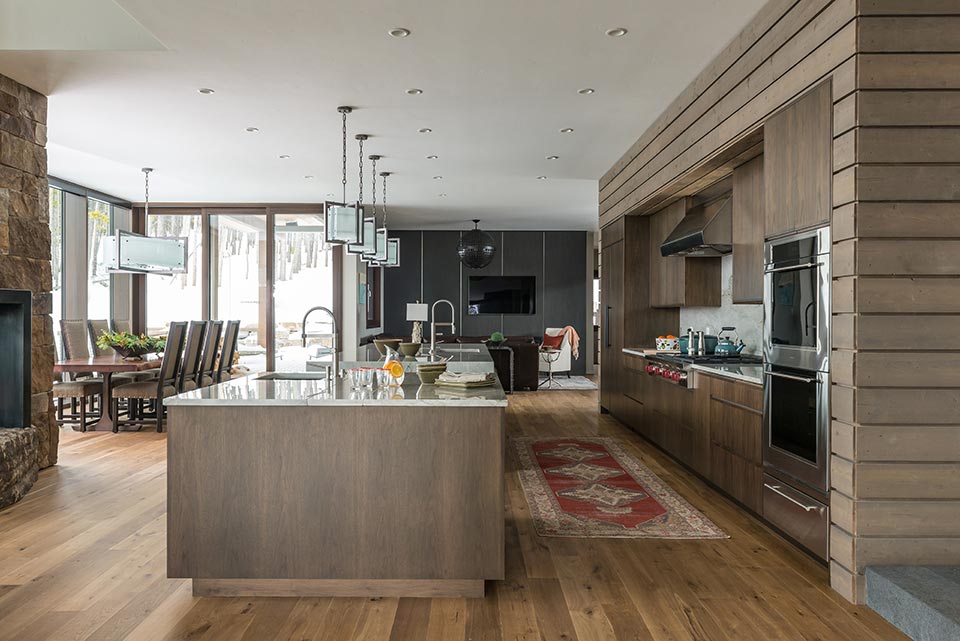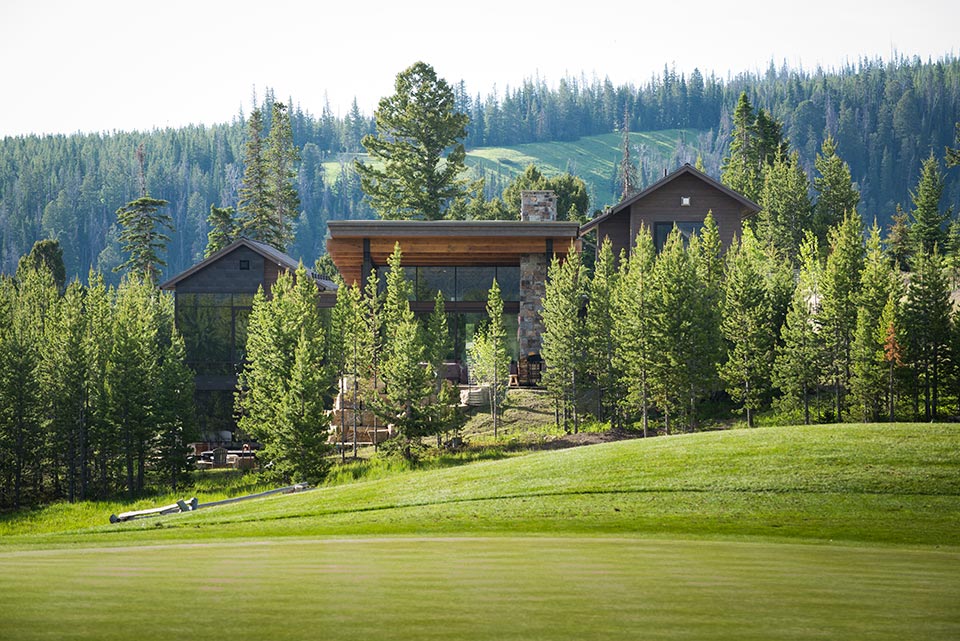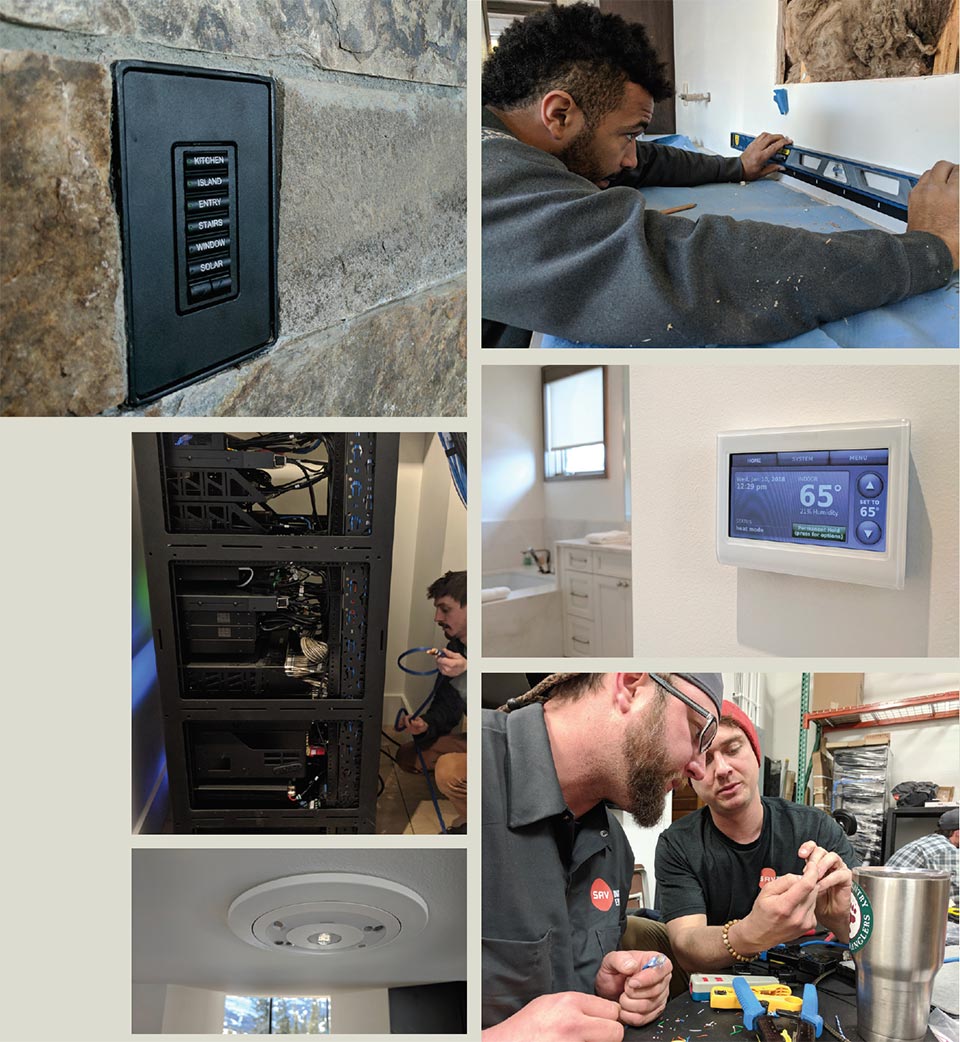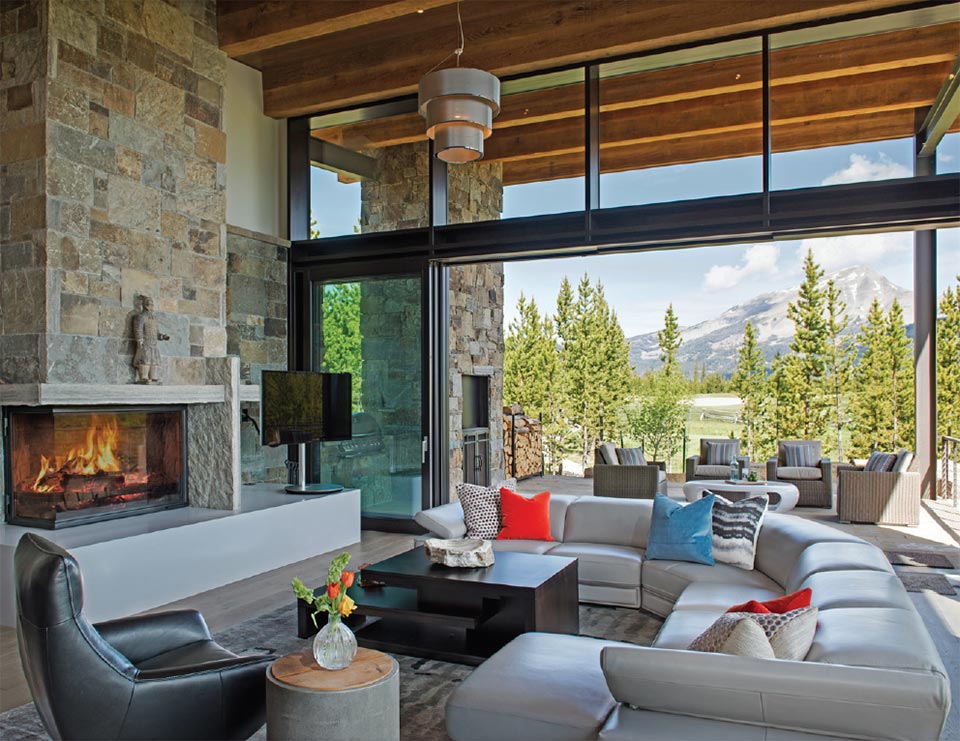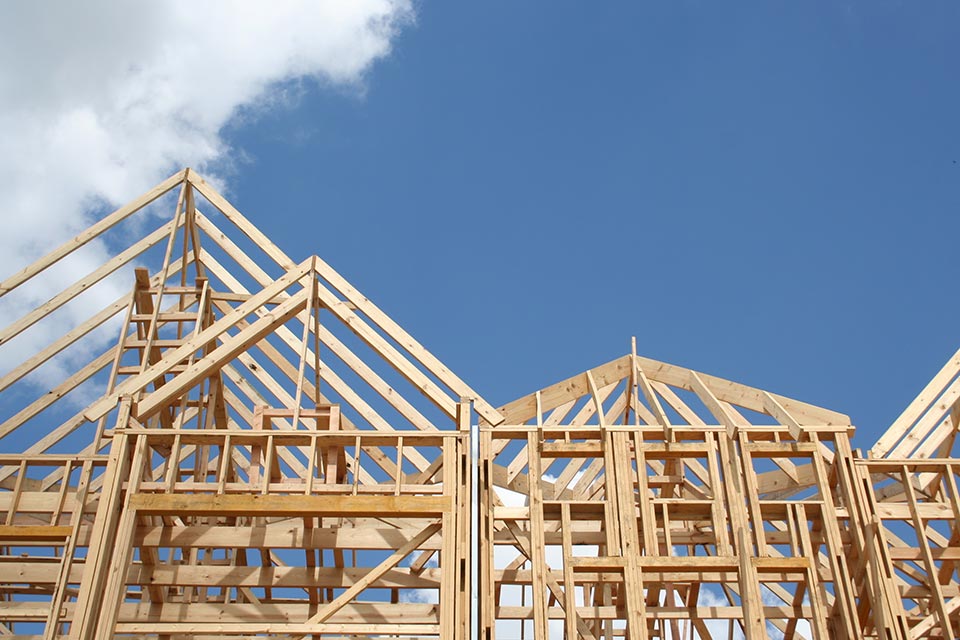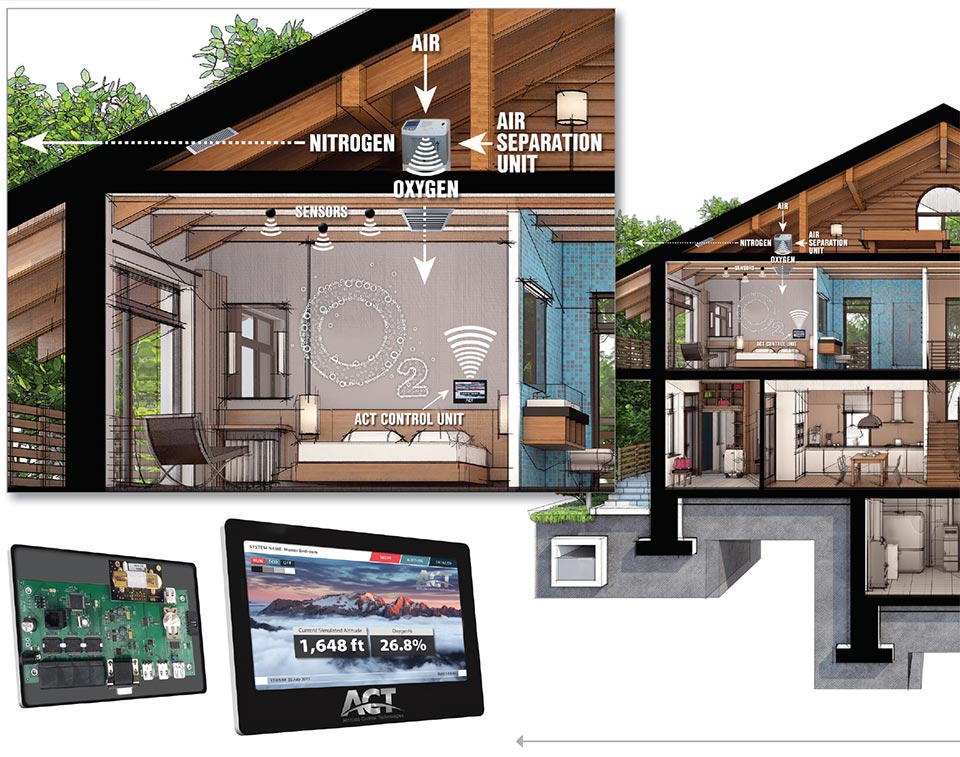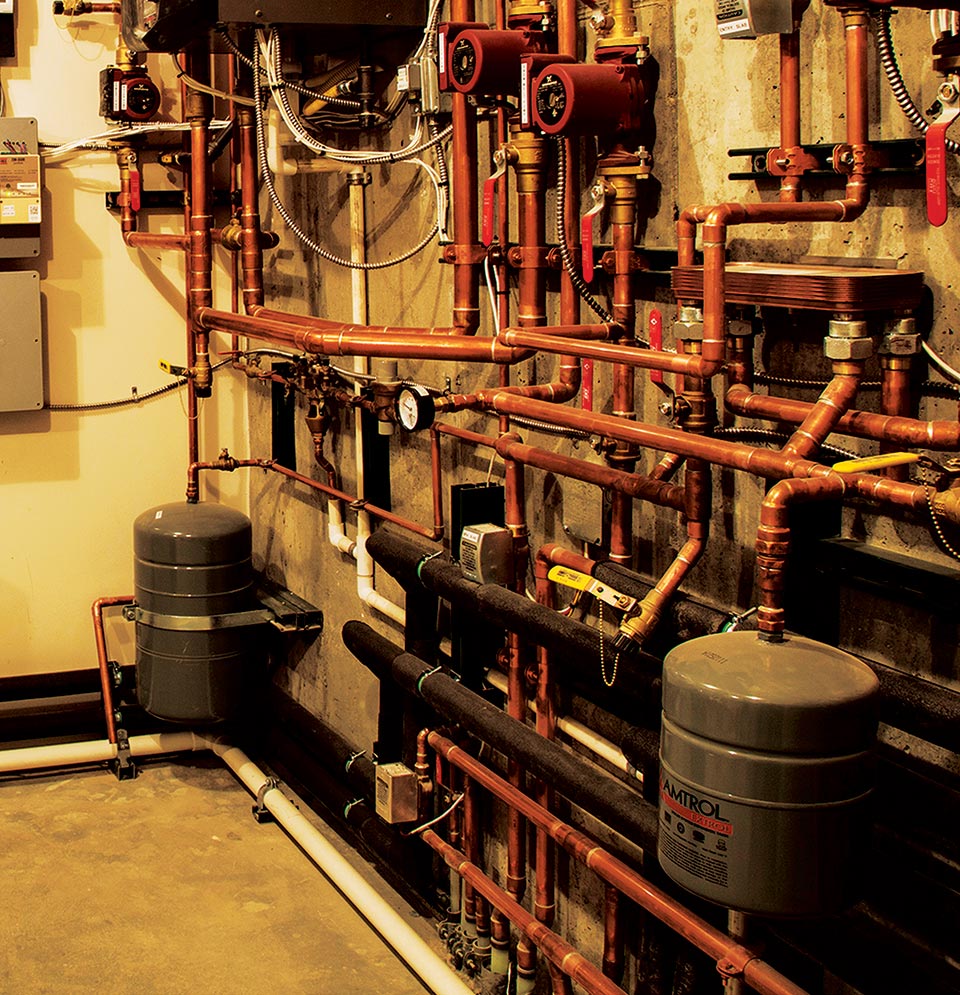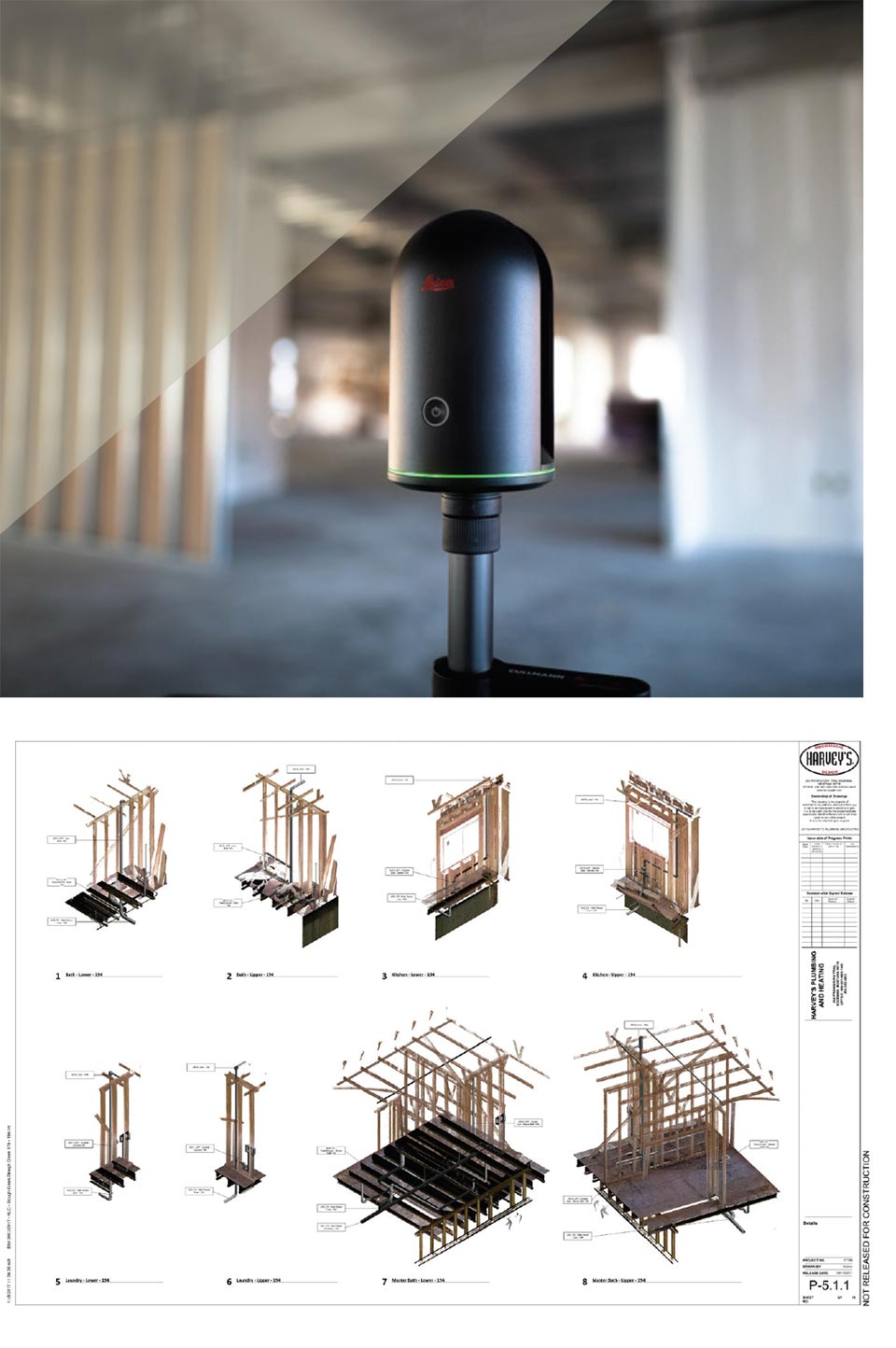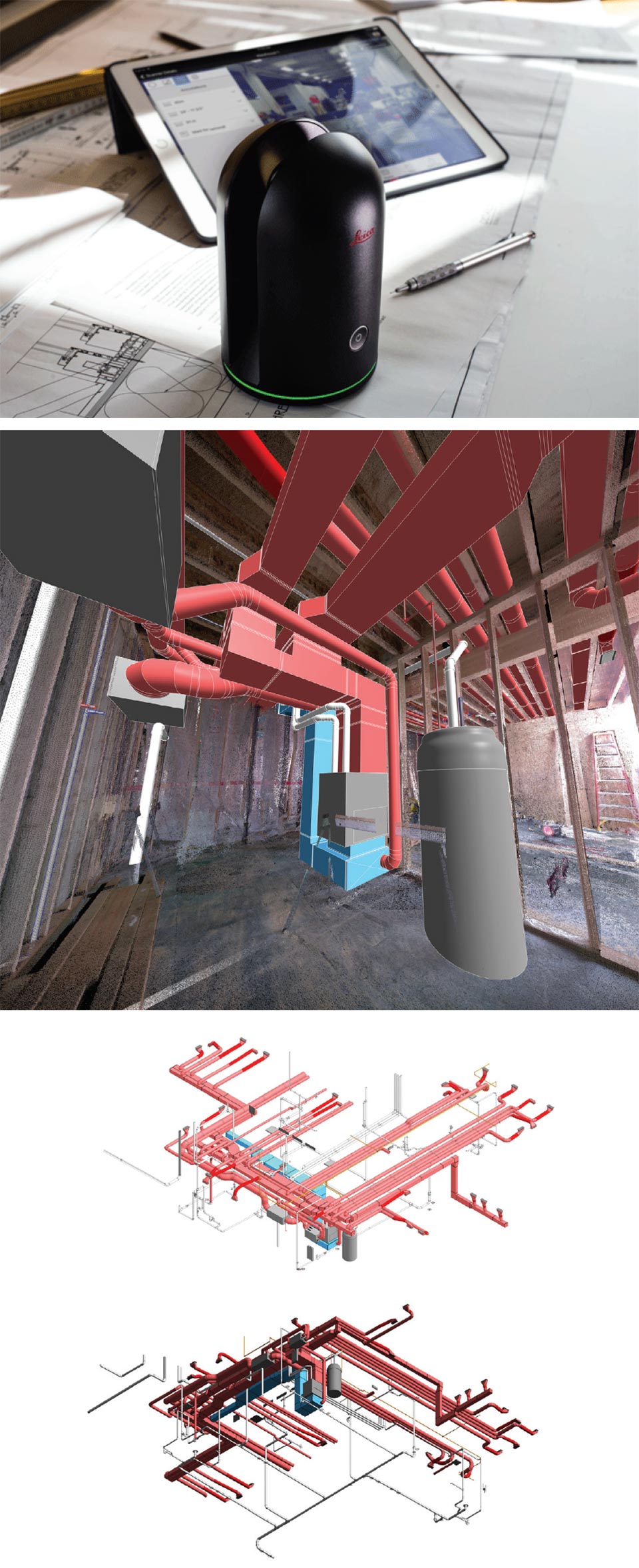What changes can we anticipate in the future about how we will live?
Some people have the ability to take a different look at important problems and to break beyond conventional wisdom to introduce new thinking and products that ultimately will affect how we will live. Meet three very different kinds of trailblazers and explore their ideas.
SAV Digital Environments
SiftING through Technologies
The biggest shifts in how we live come from technology, and frankly, it can be overwhelming to keep up with all that’s available and to make it work in a home. Cory Reistad, founder and owner of SAV Digital Environments, which has experience centers in Bozeman and Big Sky, takes on that challenge. “We create reliable and intelligent solutions to simplify lives. It’s our job at SAV to discern from all the technologies out there and narrow down what really works. Keep in mind that a large percentage of new technologies fail. By sorting through technologies, we protect our clients’ interests and their pockets.” With a background in the industry, Reistad founded Studio AV in 2005, and over time Studio AV evolved to SAV Digital Environments and it has grown to over 60 team members.
As the eyes and ears of so many in Montana, what are Reistad’s recommendations for technology that really can enhance people’s lives? This question acknowledges not only that SAV Digital Environments designs, manages, and installs systems, but also speaks to the range of its expertise in home automation: AV systems; home theaters and entertainment; lighting controls; automated shades and blinds; security and surveillance; life safety; networking and IT; climate control; energy management and more.
“We create reliable and intelligent solutions to simplify lives. It’s our job at SAV to discern from all the technologies out there and narrow down what really works.”
-Cory Reistad, Founder/Owner
SAV Digital Environments
Reistad adds, “We assemble, manage, and make it useful. We manage technology so clients are not overwhelmed and find simplicity in the complexity. It requires anticipating someone’s lifestyle.” One of the first suggestions he offers to make peoples’ lives easier is based on the experience of his own busy family with three kids ranging in ages from 10 to 14. “I recommend an “all off” button. When I leave the house I have assurances that everything is off and the home temperature goes to the dormant setting. It gets you out the door fast.” Similar to this is a vacation setting. Reistad describes it as putting the home in a dormant status for energy savings with the shades down and the lights off. Programming can also mimic that the home is occupied by setting lights to go on or off or shades to go up or down at certain times.
Like many others, Reistad is concerned with using energy responsibly. “One of the ways we reduce energy without affecting lifestyle is to set the software throughout the home to dim the lights by 11 percent. It’s not noticeable and it saves energy.” Similarly, the controls on the heating and cooling systems can be programmed for energy savings and convenience. “When we are involved early, we can enhance the user interface, and as we become better known as designers, these collaborations are happening earlier.”
Voice and gesture control is also catching a lot of attention. Reistad predicts it will change how we live. In the example he gives, the platform for voice control is built into the automation system. With the “wake up” command, the system turns on the lights, adjusts the heat, activates the espresso machine, and CNN displays through the bathroom mirror display. “For the things you do day in and day out, technology can add efficiency and make life a little easier.”
Reistad finds that clients are increasingly sophisticated about technology. “They are used to looking at screens and they adapt quickly. It’s important that we make technology as intuitive and fast as possible.” However, as more people in a household use technology, the network is taxed like never before.
“We’re installing enterprise networks as part of all our jobs,” Reistad ads. “Networks are the backbone of everything. Systems are networked-based, and we depend upon the network to deliver content. With multiple devices streaming, a network can become overloaded. The enterprise network is business class and allows multiple users the ability to access content, and I feel it is necessary to give homes reliability and the power to handle all that’s required.”
“Networks are the backbone of everything. Systems are networked-based, and we depend upon the network to deliver content. With multiple devices streaming, a network can become overloaded. The enterprise network is business class and allows multiple users the ability to access content.”
-Cory Reistad, Founder/Owner
SAV Digital Environments
Television displays are becoming increasingly large and dominant in a room, and they are often positioned in a focal point such as over the fireplace, which further draws attention. Reistad has found an interesting solution. “When the television is not in use, instead of a black dark screen, we can display an art piece, or even a slideshow of family photos. While not quite one-of-a-kind, the art has a limited license, and there are sufficient selections to find something that really works with the room’s décor. And, unlike a painting, it doesn’t take a lot to change it out. It can be displayed sufficiently large enough for an 85-inch screen. There are many developing options for this, like a new wallpaper TV by LG, and Samsung even has a TV with a frame around the screen display to present the art appropriately. Turn the TV on, and it ceases to be art and functions fully as a television.”
With such a large and growing firm, Reistad is determined to stay connected with clients and to remain in front of technology. “I’m the chief strategist at SAV Digital Environments, and I insist on working directly with all my clients. Technology is booming, but we’re also becoming more robust in our skills and up for any challenge.”
Altitude Control Technologies
oxygen control FOR BETTER LIVING
As a mountaineer, Larry Kutt has a long-standing interest In the effects of altitude on the body. “You really can’t ignore these effects as a mountaineer or as a rescuer,” says Kutt. “Altitude sickness is a very real thing, and it disrupts sleep at high altitudes.” His interest inspired him to seek out a community of physiologists, physicians, and experts in altitude physiology to share their understanding of the effects of altitude and ways to ameliorate them. As an entrepreneur and professor of entrepreneurship in Colorado, Kutt saw glimmers of opportunity to bring this knowledge into practical use. The first outcome was to develop highly technical simulated altitude environments and oxygen control systems for academic research, military pilot training, and sports conditioning. As a measure of success, in 20 years, there are now 3,000 ACT simulated altitude environments located around the world, including at Harvard Medical School, the Mayo Clinic, the U.S. Air Force Academy, and the entire wing of one hospital.
Kutt and Altitude Control Technologies turned to another problem. This one presented itself as an often-heard story similar to this: “I worked my whole life and saved money to build my dream home on a mountain near a ski area. When I’m at my new home, I have headaches and can’t sleep.”
LARRY KUTT HAS HEARD THIS STORY MORE THAN ONCE; “I worked my whole life and saved money to build my dream home on a mountain near a ski area. When I’m at my new home, I have headaches and can’t sleep.”
“It is classic altitude sickness,” states Kutt. “By going from near sea level to 9,000 feet, the majority of people develop altitude-related insomnia. Oxygen levels at most ski areas are about 30 percent lower than at sea level. Some of the other common effects of altitude sickness are headaches, digestive upset, and fatigue.” The challenge Kutt saw was to reproduce sea level conditions in homes located high in the mountains.
“We brought in experts from our medical board of advisors,” Kutt recalls. “The solution is not as simple as just adding oxygen to the sleeping area environment. To be safe and effective, oxygen must be measured and controlled relative to barometric pressure, and of course barometric pressure is constantly changing. Also, oxygen has the potential to increase fire risk if not handled properly. For that reason, we incorporated the National Fire Protection Association standards for safe oxygen use in our algorithms. This sophisticated technology addresses all of these issues, but it is extremely easy to use. Basically you turn it on and feel good.”
ACT’s Altitude Control System has three components. First is an oxygen extractor, about the size of a carry-on suitcase with a digital screen, a gauge, and an on/off switch. Within the box are circuit boards. Essentially, it is a molecular sieve that separates the nitrogen and oxygen molecules in ordinary air and uses the oxygen while venting the nitrogen outside the house.
The second component is a color touch-screen control system. Sensors (the third component) register oxygen levels, barometric pressure, and air quality and transmit this data to the controller. The programming will maximize oxygen levels but not exceed fire protection standards based on the conditions it monitors with the sensors. The result is an atmosphere with an effective altitude that is 7,000 feet lower.
“The majority of people sleep poorly at altitude, and 100 percent say their sleep improves with an ACT system,” reports Kutt. He goes on to explain that most of the systems ACT installs are in bedrooms, and that ACT systems are engineered to run very quietly. “People who sleep in an oxygenated environment get fully oxygenated at night. It’s sufficient to prevent altitude sickness and allows them to fully enjoy daytime activities like skiing, hiking, and biking.”
“We are only just beginning to recognize the importance of oxygenated sleeping environments,” Kutt says. “We have learned from real estate professionals that problems adjusting to altitude are the principal reasons behind property turnovers at high altitudes.”
“People who sleep in an oxygenated environment get fully oxygenated at night. It’s sufficient to prevent altitude sickness and allows them to fully enjoy daytime activities like skiing, hiking, and biking.”
–Larry Kutt, Owner, ACT
Asked about installation, Kutt explains that they install in both existing homes and in new homes, but almost all the projects they work on are at least at an altitude of 7,000 feet. What’s involved? “After the initial call, we analyze the rooms for air volumes and oxygen retention. We run a computer simulation using fluid dynamics.” The result is some sophisticated engineering. Most installations take two days. “Right now, about 70 percent of our projects are existing homes and 30 percent are new construction.”
The system and the controller can operate on a stand-alone basis or be integrated with home automation systems. With an app on the phone, homeowners can turn on systems during travel so that upon arrival the space is fully oxygenated. Will this catch on? “I truly believe that oxygenation systems will become as accepted and expected as radiant heat is today,” says Kutt. However, he warns that there are wrong ways of doing it with serious consequences, pointing to an event at one of the Smithsonian Museums. “An improper oxygenation system from an unqualified company led to a fire. ACT provided a replacement system that has been working perfectly for years.”
Larry Kutt has a passion for technology, products, and the steps required to make good ideas a reality. He co-founded the School of Entrepreneurship at Metro State University in Denver with the intention of inspiring others to follow their passions, as well.
Harvey’s Plumbing & Heating
PioneerING 3D Imaging for Virtual Design & Construction
Since the millennium, homes have become far more complex in construction techniques, design, and energy performance. Mechanical systems in a new home are a major component of the build with expenses reaching upwards of 20 percent of the entire cost for the home. Harvey’s Plumbing and Heating in Bozeman is utilizing 3D imaging with virtual design and construction to help lower build costs and to better protect their clients’ investments.
Bob Harvey, owner of Harvey’s Plumbing and Heating, utilizes the absolute latest in technology to further his business. Harvey’s is introducing their virtual design processes to partners in mechanical design and construction by showing how they maximize project efficiencies and aid homeowners in the understanding of their systems.
For almost three decades, the story of Harvey’s family business has mirrored the advances in the building world. “My dad started the business and he was the whole operation. He did everything and worked 16-hour days,” Bob Harvey recalls. “After graduating from Montana State University in Construction Engineering Technology and working for a few years, I joined my father’s firm in 1990.” Harvey’s has since evolved from a one-man operation to a full mechanical contracting firm with over 40 employees in six divisions: plumbing, HVAC, fabrication, hydronics, mechanical design, and service. As building trends move towards bigger spaces with smart-home systems, Harvey’s has expanded to meet their customers’ needs while using the latest technologies.
Brian Nickel, Harvey’s Design Division Manager, speaking about why their design processes are important to Harvey’s and its partner homebuilders, explains, “Technology and virtual design enhances communication with building partners and technicians, and it creates documentation for homeowners to manage their homes in the future.”
“Technology and virtual design enhances communication with building partners and technicians, and it creates documentation for homeowners to manage their homes in the future.”
–Bob Harvey, Owner, Harvey’s Plumbing & Heating
Harvey’s has developed an integrated project delivery process using the Leica BLK 360 laser scanner. The design team works closely with architects, engineers, and contractors to select the most efficient mechanical system for the project. Next, they scan the existing conditions of the job site and create a three-dimensional digital model of the space that is accurate within an eighth of an inch. The small, lightweight laser scanner takes only minutes to gather data, which is managed by ReCap Pro software. Using this software, designers can easily manipulate the data to create digital drawings of the mechanical systems, allowing for precise imaging of as-built conditions. Also, the Leica laser scans are compatible with other commonly used software programs, making it easy to share data with architects and general contractors. “This added project coordination is eliminating prefabrication discordancy, which normally would lead to delays and cost overruns. We have everything in place to prefabricate off-site, which reduces waste and lowers the carbon footprint of the project,” says Harvey.
Having a true image of the space is valuable not just for new construction and installation, but for retrofits and remodels as well. The laser scans provide the ability to confirm that system components will properly fit in a desired area, check for any unanticipated objects behind walls, and offer advanced project coordination to reduce costly delays. The homeowner also receives the digital information, as Bob Harvey notes. “Instead of receiving a cumbersome 1,000-page binder, we present a fully digital document. By including the scan point data, the homeowner knows where every component of the system is located for service or repair and the part number.”
Utilizing the Leica BLK 360 scanner for mechanical system design is a new approach to the technology, even in the eyes of the manufacturer. Leica has invited Brian Nickel to present Harvey’s process and its benefits at this year’s Hexagon Live event. Brian notes, “No one in the nation is using the technology this way,” but he is confident that this method will positively affect how things are done throughout the industry.
Harvey’s believes that by introducing this new use of technology in the trades, they will also introduce the trades to the next generation. Brian Nickel teaches a drafting portfolio class at Gallatin College and serves on the college advisory board where his experience has reaffirmed this belief. “We all recognize that young people are no longer interested in going into the trades and the trades are dying off,” Harvey observes. “We believe that 3D design will interest a new labor source of people who are accustomed to using technology and who will be more comfortable learning and understanding systems through virtual design.”
It’s interesting to consider all the changes since Bob Harvey joined his hard-working father in business almost 30 years ago. Even more interesting to consider is how different the building process will be in the future with laser scanning for virtual design and construction. Harvey’s remains at the forefront of these exciting changes.
